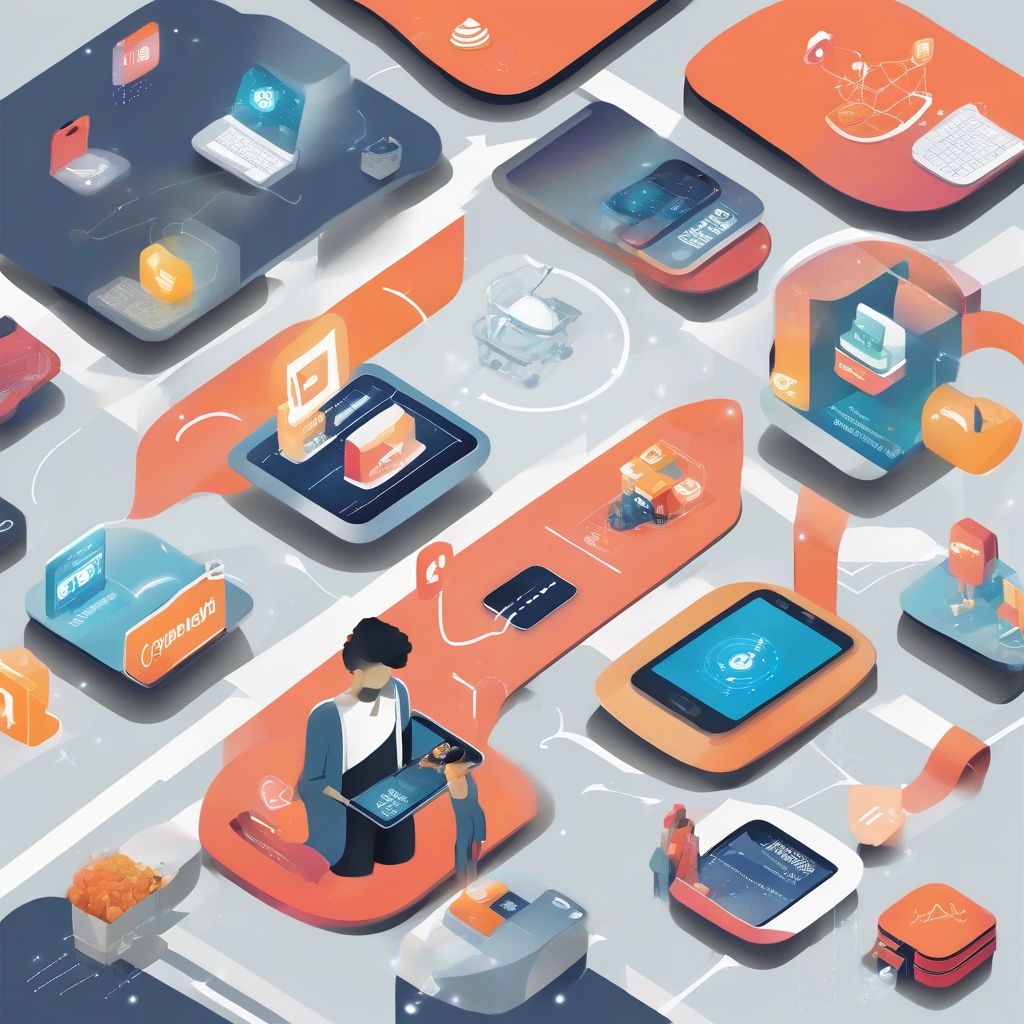Imagine a world where your online shopping experience feels like stepping into a store tailored just for you, where the lines between online and offline blur, and every interaction feels personalized and engaging. That’s the future of customer experience in ecommerce, and it’s closer than you think.
The Rise of the Experiential Shopper
Today’s consumers, especially millennials and Gen Z, are no longer satisfied with just purchasing a product online. They crave experiences that resonate with their values, preferences, and desire for connection. This shift towards experiential shopping is driven by several factors:
- Increased competition: With millions of online stores vying for attention, businesses need to go beyond offering competitive prices and fast shipping.
- The rise of social media: Platforms like Instagram and TikTok have transformed how people discover and engage with brands, making visual and interactive content paramount.
- The demand for personalization: Consumers are bombarded with information overload, making personalized recommendations and tailored experiences crucial for capturing their attention.
Key Trends Shaping the Future of Ecommerce Customer Experience
To thrive in this evolving landscape, ecommerce businesses need to embrace emerging technologies and trends that cater to the needs of the experiential shopper:
1. Hyper-Personalization: Tailoring the Journey
Gone are the days of generic product recommendations. The future of ecommerce is all about delivering hyper-personalized experiences that cater to individual preferences and needs. This includes:
- AI-powered product recommendations: Analyzing browsing history, purchase patterns, and even social media activity to suggest products that truly resonate with the customer.
- Personalized content and offers: Delivering targeted content, promotions, and discounts based on individual interests, demographics, and shopping behavior.
- Customized shopping journeys: Dynamically adjusting website layouts, product displays, and even checkout processes to align with individual customer preferences.
2. Omnichannel Integration: Bridging the Online and Offline Divide
Customers expect a seamless experience, regardless of whether they’re browsing on their phones, shopping in-store, or interacting with a brand on social media. Omnichannel integration is crucial for meeting these expectations by:
- Providing consistent experiences across all touchpoints: Ensuring a unified brand identity, product information, and customer service across online stores, physical locations, mobile apps, and social media platforms.
- Enabling seamless transitions between channels: Allowing customers to start a purchase on one channel and complete it on another, such as adding items to their cart on their phone and checking out later on their laptop.
- Leveraging data to create personalized experiences across channels: Using customer data collected across all touchpoints to provide personalized recommendations, tailored communication, and a unified brand experience.
3. Interactive and Immersive Technologies: Bringing Products to Life
Imagine trying on clothes virtually from the comfort of your home or experiencing a product demonstration through augmented reality (AR) before making a purchase. Interactive and immersive technologies are transforming how customers experience products online:
- Augmented Reality (AR) and Virtual Reality (VR): AR allows customers to overlay digital objects onto their real-world environments using their smartphones or tablets, while VR creates immersive, 360-degree experiences that transport customers to different locations or product demonstrations.
- 3D Product Visualization: High-quality 3D models allow customers to interact with products from all angles, zoom in on details, and even customize colors and features.
- Virtual Try-On: Using AR technology, customers can virtually try on clothes, accessories, and even makeup to see how they look on them before purchasing.
4. The Power of Community: Building Connections and Fostering Loyalty
Consumers are increasingly seeking out brands that align with their values and offer a sense of community. Ecommerce businesses can foster this sense of belonging by:
- Creating online communities and forums: Providing spaces for customers to connect with each other, share their experiences with products, and engage with the brand.
- Leveraging user-generated content (UGC): Encouraging customers to share photos and videos of themselves using products, fostering authenticity and social proof.
- Collaborating with influencers and brand ambassadors: Partnering with individuals who resonate with their target audience to reach new customers and build brand credibility.
5. The Importance of Cybersecurity: Building Trust in a Digital World
As ecommerce continues to grow, so do concerns about data security and privacy. Customers are more likely to trust and engage with brands that prioritize their online safety:
- Implementing robust security measures: Using encryption, secure payment gateways, and other measures to protect customer data from unauthorized access.
- Being transparent about data collection and usage: Clearly communicating how customer data is collected, stored, and used to build trust and transparency.
- Staying up-to-date on cybersecurity threats: Regularly updating security protocols and educating employees about best practices to mitigate risks.
 The Future of Customer Experience in Ecommerce
The Future of Customer Experience in Ecommerce
[amazon bestseller=”ecommerce marketing”]
Conclusion: Embracing the Future of Ecommerce Customer Experience
The future of customer experience in ecommerce is all about creating personalized, engaging, and connected journeys that cater to the needs of the experiential shopper. By embracing emerging technologies, prioritizing omnichannel integration, fostering community, and building trust through robust cybersecurity measures, ecommerce businesses can create exceptional experiences that drive customer loyalty and long-term success. By staying ahead of the curve and adapting to evolving consumer expectations, businesses can thrive in the dynamic and ever-changing world of ecommerce.
